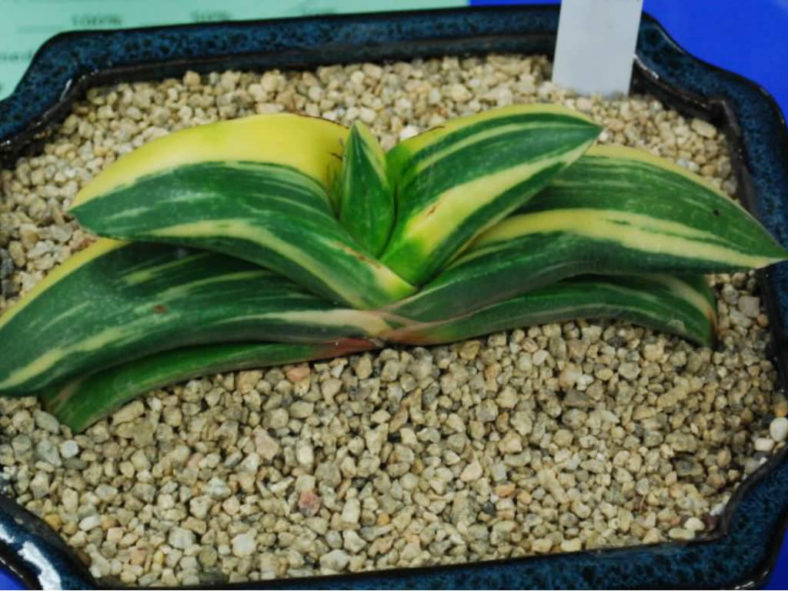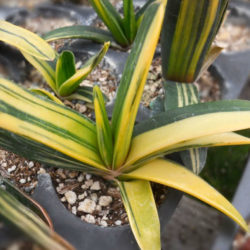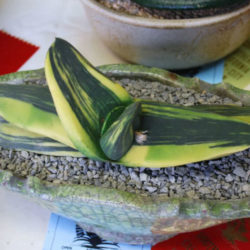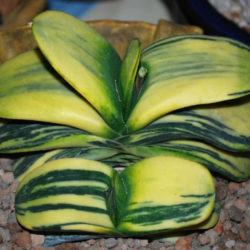Scientific Name
Gasteria nitida var. armstrongii 'Variegated'
Accepted Scientific Name
Gasteria nitida var. armstrongii (Schönland) van Jaarsv.
Common Name(s)
Cow Tongue
Synonym(s)
Gasteria armstrongii 'Variegated'
Scientific Classification
Family: Asphodelaceae
Subfamily: Asphodeloideae
Tribe: Aloeae
Genus: Gasteria
Description
Gasteria nitida var. armstrongii 'Variegated' is a dwarf, slow-growing succulent with usually 2 to 4 variegated, roughly tuberculate leaves arranged in two opposite vertical rows. It can grow up to 4 inches (10 cm) wide. The leaves are creamy-white or yellow with green stripes and even shades of brown.
The inflorescences are unbranched and up to 20 inches (50 cm) tall. Flowers are stomach-shaped, pinkish-red with yellowish-green tips, up to 1 inch (2.5 cm) long.
Origin
This succulent is a variegated form of Gasteria nitida var. armstrongii.

Hardiness
USDA hardiness zone 9b to 11b: from 25 °F (−3.9 °C) to 50 °F (+10 °C).
How to Grow and Care
Gasterias are often grouped with Haworthia because the plants have similar cultural requirements. Both are attractive, small succulents that can tolerate more shade than many succulents, making them more suitable as houseplants. However, gasterias are susceptible to fungal infections, which usually appear as black spots on the leaves. These result from too much humidity or water on the leaves, but they should not spread too quickly. Gasterias have a natural defense mechanism against such fungal attacks and attack the invading organism and seal off the wounded spot. In general, any place where Haworthia and Aloe thrive will be hospitable to a Gasteria.
Gasterias are small, shallow-rooted, and relatively slow-growing. Therefore, they are often grown in small clusters in wide, shallow dishes. Over time, clusters will naturally enlarge as the mother plant sends off small plantlets.
See more at How to Grow and Care for Gasteria.
Links
- Back to genus Gasteria
- Succupedia: Browse succulents by Scientific Name, Common Name, Genus, Family, USDA Hardiness Zone, Origin, or cacti by Genus
Photo Gallery
Click on a photo to see a larger version.


